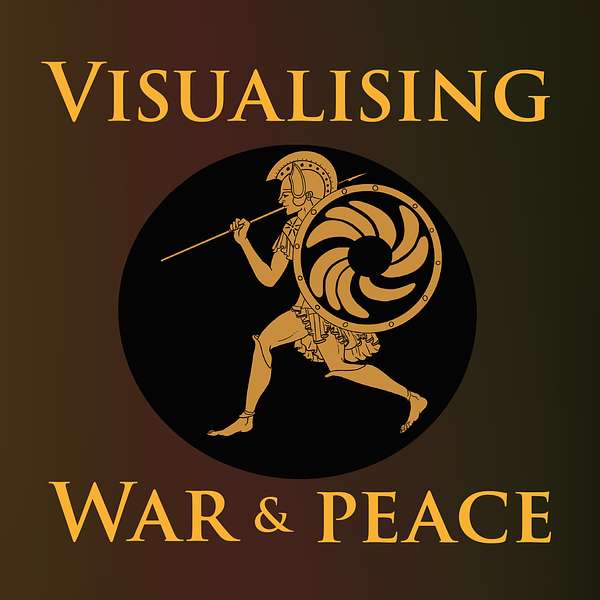
Visualising War and Peace
How do war stories work? And what do they do to us? Join University of St Andrews historian Alice König and colleagues as they explore how war and peace get presented in art, text, film and music. With the help of expert guests, they unpick conflict stories from all sorts of different periods and places. And they ask how the tales we tell and the pictures we paint of peace and war influence us as individuals and shape the societies we live in.
Visualising War and Peace
From Poland to Scotland in the wake of World War II
This episode is part of our mini series, exploring forced displacement as one of the many legacies of conflict. Research Assistant Dr Martyna Majewska interviews artist Mateusz (Mat) Fahrenholz, who shares his memories growing up in the Polish exile community in St Andrews, Fife, as the son of Polish war-time refugees.
Mat's parents were both displaced from eastern Poland (now Ukraine) as a result of World War II. As he explains in the podcast, his father was taken prisoner by German forces and (together with a group of other Poles) staged a daring escape from their labour camp to cross Europe and seek asylum in the UK. Mat's mother's journey was more sedate (she migrated after the war), but she - like so many other Poles - also found herself making a new home in an unknown country far from where she had been born and raised.
Mat shares his memories of the vibrant Polish exile community that thrived in post-war Fife. He discusses the various kinds of work that his father took on in St Andrews, eventually becoming a cobbler and running a leather shop in the heart of the town. As he explains, that shop, the nearby Polish barber shop, and Mat's family home became important community hubs, where Poles gathered to talk, share their common experiences, support each other, and enjoy each other's company. Mat's testimony helps us understand how Polish refugees dealt with their war-time trauma (in a huge variety of ways, both individually and collectively); and he reflects on his parents' determination not to pass that trauma on to their children. He talks about family visits back to Poland (but never to Ukraine, to the places his parents came from), and why he and his brothers have all ended up living in Warsaw, after being raised in Scotland. He also discusses some of the photography and art that he created in response to his parents' story, and the ethical questions it raised for him around how to visualise such historical experiences for others.
Mat and Martyna's conversation gives us fascinating insights into the many ripple effects of forced migrations on individuals, families and whole communities, across multiple generations. It adds to the picture painted by Diana Forster and Josef Butler in last week's podcast (also about forced displacements from Poland during World War II), and is part of our wider curation of Diana Forster's new art exhibition, Somewhere to Stay. You can find out more by visiting our ‘Visualising Forced Migration’ website – where you will also be able to look at images of some of Forster’s art, and learn more about her family story and Polish exile history more generally. Our website also features a range of stories and testimonies about more recent forced migrations, with contributions from a wide range of people. We are grateful to the Imperial War Museums’ 14-18 Now Legacy Fund for supporting our work with a generous grant.
If you have any questions or want to contribute to our ongoing discussions about how we narrate and understand forced migration, please do get in touch. You can follow us on social media (just search for 'Visualising War') or contact us directly by emailing us at viswar@st-andrews.ac.uk. We look forward to hearing from you!
Our theme music was composed by Jonathan Young.
The show was mixed by Zofia Guertin.